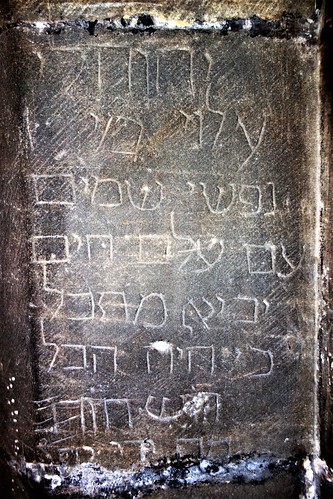Glasgow for Jewish Visitors
(Above image captures a display of Jewish Tartan.)
Introduction
The bulk of the current Jewish population are descended from late 19th century migrants from Europe who may have originally been destined for the U.S.A. At the time Scotland was a transit point and for various reasons an element of the migrants did not continue on across the Atlantic. By 1914 the (Jewish) populations of Glasgow and Edinburgh were 12000 and 1500 respectively. Other communities could be found in Greenock, Ayr, Falkirk, Inverness, Dundee and Dunfermline.
The early migrants were very poor and tended to concentrate in and around the Gorbals area (of Glasgow). They focused on production and merchandising of goods, e.g. shop-keeping, tailoring, footwear and furniture. In due course, access to higher education provided an escape route from the ghettos and today the Gorbals has a negligible Jewish population.
By prior arrangement, visit Giffnock Synagogue in Glasgow's Southside.
If required, visit the kosher delicatessen at 6 Burnfield Road.
Next, to the nearby (about 4 miles) Gorbals region for a drive around.This is where Jewish immigrants (mainly refugees from Russian pogroms of the late 19th century) initially settled.
Next, through Glasgow city to the Cathedral and adjacent Necropolis burial ground. At the latter is an exclusively Jewish section.
In the Cathedral's Lower Church can be found an inscription in Hebrew which has proved difficult to fully translate. A Cathedral guide should be able to direct visitors to the precise location.
Jewish section of Necropolis.
Final visit to Garnethill Synagogue which is Scotland’s oldest
and dates from 1879. Here also is the Scottish Jewish Archives Centre.Prior arrangement may be necessary to visit the Synagogue.
© Nigel P Cole/Catswhiskerstours Limited
Introduction
The bulk of the current Jewish population are descended from late 19th century migrants from Europe who may have originally been destined for the U.S.A. At the time Scotland was a transit point and for various reasons an element of the migrants did not continue on across the Atlantic. By 1914 the (Jewish) populations of Glasgow and Edinburgh were 12000 and 1500 respectively. Other communities could be found in Greenock, Ayr, Falkirk, Inverness, Dundee and Dunfermline.
The early migrants were very poor and tended to concentrate in and around the Gorbals area (of Glasgow). They focused on production and merchandising of goods, e.g. shop-keeping, tailoring, footwear and furniture. In due course, access to higher education provided an escape route from the ghettos and today the Gorbals has a negligible Jewish population.
- In the early days Jewish immigrants were active in the Trade Union movement whilst today the community is represented in all mainstream political parties.
- Other relevant facts and information:
- In Scotland, the umbrella body for the community is the Scottish Council of Jewish Communities.
- In Scotland there exists 10 synagogues. Glasgow’s Garnethill Synagogue (1879) has been extensively restored and is associated with leadership of the community.
- Glasgow’s famous Necropolis Cemetery has a dedicated Jewish section containing 50 plots.
- Scotland and Israel are similar in size and populations.
- The official Scottish Jewish Tartan can be obtained via Giffnock Synagogue attached to which is a kosher restaurant.
By prior arrangement, visit Giffnock Synagogue in Glasgow's Southside.
If required, visit the kosher delicatessen at 6 Burnfield Road.
Next, to the nearby (about 4 miles) Gorbals region for a drive around.This is where Jewish immigrants (mainly refugees from Russian pogroms of the late 19th century) initially settled.
Next, through Glasgow city to the Cathedral and adjacent Necropolis burial ground. At the latter is an exclusively Jewish section.
In the Cathedral's Lower Church can be found an inscription in Hebrew which has proved difficult to fully translate. A Cathedral guide should be able to direct visitors to the precise location.
Jewish section of Necropolis.
© Nigel P Cole/Catswhiskerstours Limited







Comments
Post a Comment